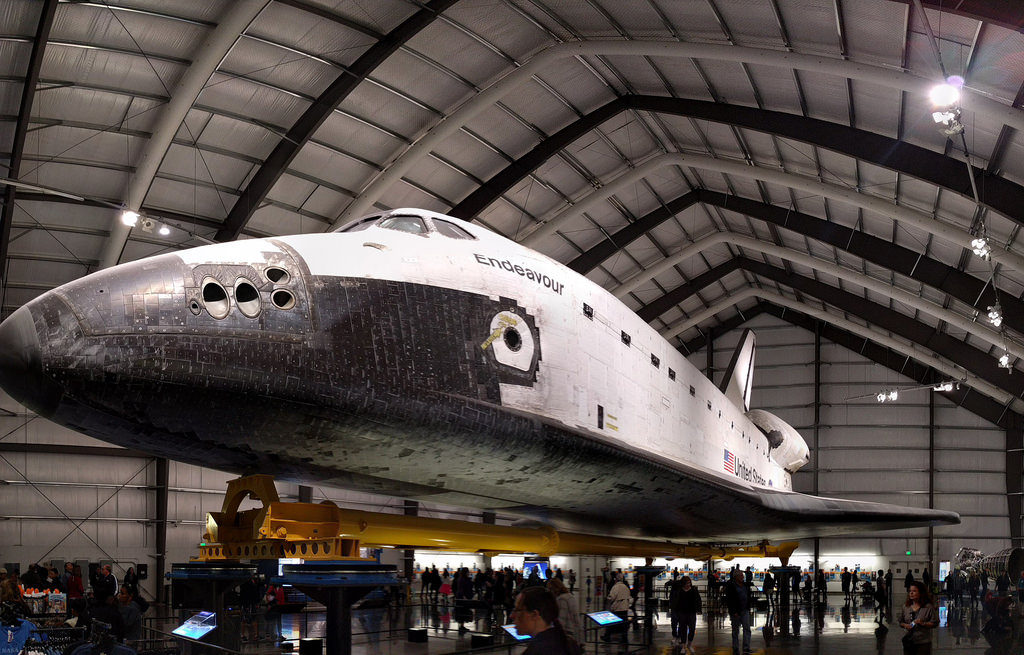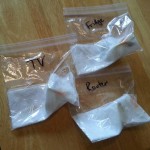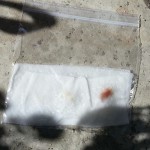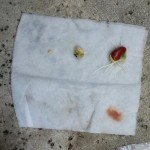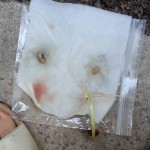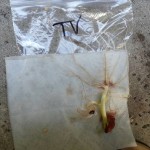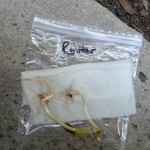It’s interesting how well earth, water, air and fire map to solid, liquid, gas and plasma. People recognized the four states of matter, but for ages they interpreted them as ingredients instead of structure.
Tag: Science
Asymptomatic Covid and Genetics
This is fascinating: Researchers looked at variations in the human leukocyte antigen (HLA) genes of people who had confirmed cases of Covid before the vaccine rollout and also had genetic records on file.
Those with a particular variation were twice as likely to have been asymptomatic.
Having that same variation from both parents made them 8.5 times as likely to have been asymptomatic!
They looked at two more cohorts and found the same results.
And then they looked at T-cells collected before the pandemic, and found that the ones with this allele responded more actively to SARS-COV2, despite never having been exposed to it before. That lends weight to the hypothesis that some people’s immune systems were able to recognize it as similar to more run-of-the-mill coronaviruses.
Next they want to broaden the study more to include people with a wider range of ancestry.
It doesn’t come close to explaining all asymptomatic cases, and they didn’t look at how it might stack with immune responses that are actually targeted at covid (vaccines, prior infections), or whether it also reduces the chances of long-term damage from covid.
But wouldn’t it be great if someone could come up with a supplement based on what this HLA variant produces that’ll cause your immune system to generalize better? Even if it’s just within coronaviruses?
Prioritizing Trees vs Urban Heat
We know trees can reduce the urban heat island effect. A Nature Conservancy project is combining data on current tree coverage, heat, health, income, energy sources and more to determine where planting new trees would most help the communities currently most affected by the problem. (Note: The article’s in the context of Google’s role in the data analysis & visualization.)
I looked at the data from my local area, and it not only prioritized the areas I know are lower-income with fewer trees, it prioritized where people actually live, too. There are some areas that have very low tree coverage but are also rated very low priority…because they’re mall parking lots, light industry, heavy industry, office parks, etc.
Things to remember with Omicron in the news
1. Science isn’t handed down from on high fully formed. It’s a process of figuring things out based on what you know so far and what you discover. Like trying to determine the picture on a puzzle when the pieces are still scattered around the house. You look for more pieces, you figure out where they fit, you set aside the ones that turn out to be from a different puzzle, and you get a better idea of what the picture is as you go along.
2. Tactics change with the terrain. When a tool is in short supply, you save it for those who most need it. When it’s widely available, you can use it more. When a risk is both high and widespread in your area, you take more precautions than when it’s lower and rarer.
3. News and advice should be looked at through the lens of “Based on what we know so far, under current conditions.” As we learn more, and as conditions change, that will change. That’s how science works, how learning works, and how time works.
4. Nothing in life is certain. But a 90% reduction in your chances of something awful happening is pretty damn good when you compare it to the baseline instead of that ideal 100%.
Pixar, the Space Shuttle, and Kids’ Museum Memories
Went with the family to see Space Shuttle Endeavour and a Pixar-themed exhibit on computer animation at the California Science Center.
The 6YO loved the Pixar exhibit, which broke down all the steps to creating a computer-animated movie into separate hands-on centers where you could do things like…
- Apply different textures and bump maps to an object.
- Rig a character for movement.
- Change the lighting of a scene (real or virtual).
- Define a shape in a 3D grid and watching the computer rotate it (way too much time on this one).
- Create your own stop-motion animation by moving an actual desk lamp.
The only way we got him out was to point out that the museum was closing, and we only had 10 minutes left to get to the touch pools he’d said he wanted to visit. As it turned out, the pools shut down about two minutes before we got there, but staff was willing to let him look at the starfish. And we did catch the last desert flash flood simulation of the day.
As for the shuttle…he wasn’t impressed. He insisted on taking the simulator ride, but the real thing? I guess it’s old news when the whole fleet’s already been shut down by the time you start hanging onto long-term memories. 🤷
Admittedly, a big aluminum hut isn’t as suitable a viewing area for Endeavour as open space in broad daylight, surrounded by an enthusiastic crowd. Though that might have been the fact that it was my first time getting up close. On the other hand, this time I could see both sides. Heck, I could walk under it!
There is a new building in the works, where they’ll be displaying it with one of the external tanks in launch position. I’m sure it will lead to plenty of cartoons and movies where someone goes to the museum, breaks into the shuttle and blasts off.
I couldn’t make the building line up with my memories of visits when I was younger, back when it was the Museum of Science and Industry. The only thing I could match up at all were the wall facing the Exposition Park rose garden, and some of the buildings by the parking lot (a sunken structure now, but I remember it being flat).
Then again, what I remember are specific exhibits more than the layout: a big math/physics exhibit, a chicken incubator, and a multi-screen cartoon about energy sources and engine types called “The Water Engine.” (Each screen has a character talking up internal combustion, flywheels, mag-lev, electric, etc. I still quote the Peter Lorre-inspired fuel-cell scientist saying “And then…we burn the hydrogen!”)
It turns out there’s a good reason nothing fit my memory: They tore down the whole building in the late 1990s, preserving only that one wall!
Science vs Magic–I Mean, Sufficiently-Advanced Technology
An odd contradiction: People are turning away from science as a way to understand the world, even though we keep using more and more advanced technology which is invented using that scientific knowledge.
What if it’s that, in terms of Clarke’s Third Law, the technology we use is sufficiently advanced that it might as well be magic?
It’s easy to understand how a toaster works. Electricity goes in and heats up the wires. Or an incandescent light bulb, or an internal combustion engine. Anything that’s primarily mechanical, you can understand intuitively: “Oh, this part moves that part, which moves that part, and then I kind of get lost, but eventually it gets to the wheels.”
But a computer chip? GPS navigation? Downloading and playing a game on a mobile phone? These things might as well be magic to most people who use it. At the consumer level, GPS is a black box that tells you where you are and how to get where you’re going. But underneath that, it’s satellites, relativity, radio transmitters, radio receivers, computer software, circuitry, mathematics, rockets, data transmission, traffic detection, mapping software…so many pieces that take some degree of studying to really understand.
If our technology is “magic,” it ceases to be a reminder that science works, and may even encourage belief in things that don’t have clear mechanisms and supporting evidence. The very success of science at making possible the technology we use everywhere could, ironically, be discouraging people from believing in it.
*I wrote this three years ago. I’m not sure why I didn’t post it at the time. All I had to do was tighten up the wording a little bit. And sadly, the situation hasn’t improved.
Wi-Fi Sprouter (The Seeds Are All Right)
You’ve probably seen the story about how a group of teenagers showed that plants won’t grow next to a WiFi router. We did our own experiment, but first some things to consider about the story making the rounds:
- They tested whether cress seeds would germinate near a wi-fi router.
- The seeds by the router DID grow, just not as well as the control group.
- The photos accompanying the news articles I saw don’t match the photos that appear in the report. They actually look like a before and after set.
- It was done a year ago, in spring 2013.
- It was a school science project. That’s not a knock, they did some good things like sending traffic through the router to make sure it was actually transmitting, and mixing seeds from multiple packets together to eliminate differences between batches.
- As with all science, the results need to be repeated in more experiments with rigorous controls to be sure they accounted for all variables.
- I couldn’t find a followup study in all the blind repostings of the original OMGWIFI claims, though I did find a discussion at JREF. If you can read past the annoyingly dismissive comments, you’ll also find some insightful remarks and links to the actual presentation (in Danish, so it’s tricky to read, but they have charts and photos)…and a few anecdotal stories by people who use the heat from their wireless routers to HELP germinate seeds!
After we read up on this, Katie decided to do a simple experiment herself. She put seeds next to our router, on top of our refrigerator, next to the TV, and for a control, outside. She found that the seeds placed next to our router did just fine — considerably better than those left outside, and slightly better than those placed elsewhere around the house.
Each bag contained one kidney bean, one black-eyed pea, and one seed from the red bell pepper I cut up for dinner. I put a section of select-a-size paper towel, folded twice, in each and set the seeds inside the second fold. Each bag got 15 mL of Brita filtered water and the air was squeezed out before sealing. Then I left them around the apartment for several days to see if they’d sprout. This is a picture of what resulted.
I wonder if the seeds in the school experiment just dried out. Katie sealed her seeds in plastic bags, which allowed radiation to pass through, but trapped moisture. As I understand it, the students watered their seeds throughout the experiment, but it’s possible the trays dried out overnight. Comparing moisture content/retention would be an interesting follow-up.
Obviously, this isn’t any more rigorous than the original experiment. But it shows that the results they found are the beginning of the process, not the last word. More importantly, it’s something you can easily test yourself if you’re so inclined. Next time you see a startling claim that’s something you can test without too much trouble, try checking it out for yourself.
Incidentally: We planted the seeds in our patio yesterday. With any luck, they’ll do as well as our tomatoes (and better than our poor carrots) this year!
